Houseplant propagation is a fantastic way to expand your plant collection without spending a fortune. Whether you’re a seasoned plant parent or just starting out, there are several methods you can use to propagate your favorite houseplants. In this comprehensive guide, we’ll explore six popular techniques: water propagation, stem cuttings, air layering, division, leaf cuttings, and offsets. We’ll provide detailed instructions and tips to help you successfully propagate your plants.
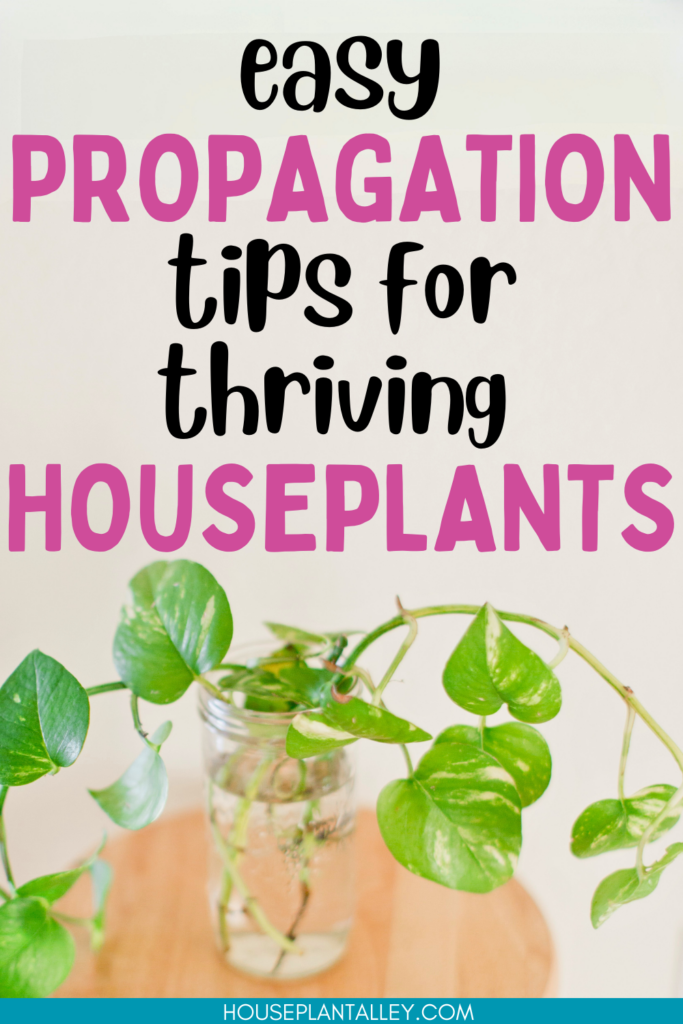
Contents
Water Propagation
Water propagation is a simple and effective method for growing new plants from cuttings. This technique is ideal for plants that root easily in water, such as pothos, spider plants, peace lilies, philodendrons, mint, basil, Swedish ivy, coleus, tradescantia, and begonia. Here’s how to do it:
- Choose Your Plant: Select a healthy plant with long stems and nodes (the points where leaves attach to the stem).
- Make Your Cutting: Using clean scissors or garden shears, cut a stem just below a node. Aim for a cutting that’s about 4-6 inches long.
- Place in Water: Fill a clean glass jar or vase with room temperature water. Place the cutting in the water, ensuring that the node is submerged.
- Provide Light: Place the jar in a spot with bright, indirect light. Avoid direct sunlight, as it can scorch the cutting.
- Change Water Regularly: Replace the water every few days to keep it fresh and oxygenated. This helps prevent root rot.
- Wait for Roots: Roots should start to appear within a few weeks. Once the roots are about 1-2 inches long, it’s time to transplant the cutting into soil.
- Transplant: Gently remove the cutting from the water and plant it in a pot with well-draining soil. Water the new plant and place it in a spot with bright, indirect light.
Stem Cuttings
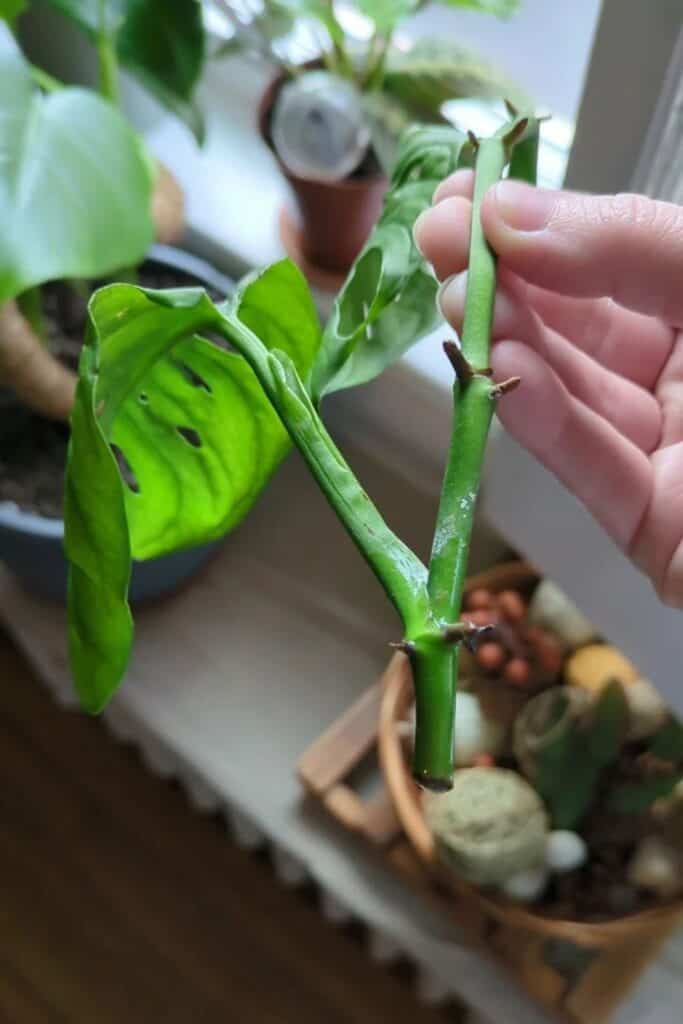
Stem cuttings are another popular method for propagating houseplants. This technique works well for plants like African violets, begonias, philodendrons, ZZ plants, ficus, geraniums, jade plants, lavender, rosemary, and sage. Here’s how to do it:
- Choose Your Plant: Select a healthy plant with sturdy stems.
- Make Your Cutting: Using clean scissors or garden shears, cut a stem just below a node. Aim for a cutting that’s about 4-6 inches long.
- Prepare the Cutting: Remove the lower leaves and any flowers from the cutting. You can also dip the cut end in rooting hormone powder to encourage root growth.
- Plant the Cutting: Fill a small pot with moist, well-draining soil. Make a hole in the soil with a pencil or chopstick and insert the cutting. Gently press the soil around the stem.
- Provide Light: Place the pot in a spot with bright, indirect light. Avoid direct sunlight, as it can scorch the cutting.
- Keep Moist: Keep the soil consistently moist but not waterlogged. You can cover the pot with a clear plastic bag to help retain moisture.
- Wait for Roots: Roots should start to appear within a few weeks. Once the roots are well-established, you can transplant the new plant into a larger pot.
Air Layering
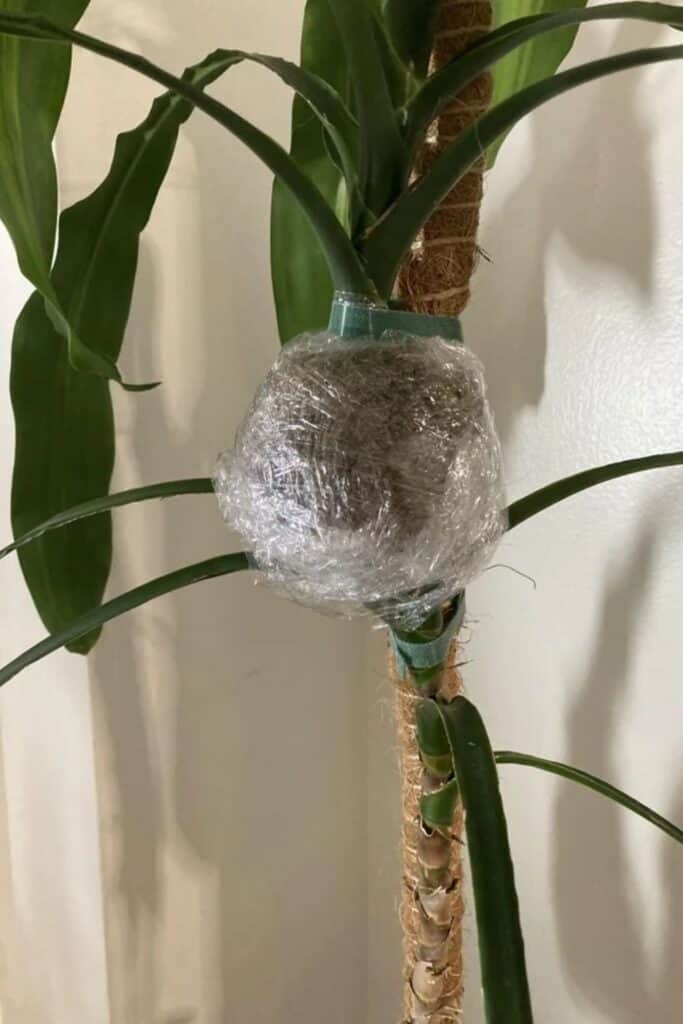
Air layering is a more advanced propagation technique that works well for plants with woody stems, such as rubber plants, ficus trees, schefflera, monstera, dumb cane, citrus trees, camellias, magnolias, gardenias, and hydrangeas. This method involves creating roots on a stem while it’s still attached to the parent plant. Here’s how to do it:
- Choose Your Plant: Select a healthy plant with a thick, woody stem.
- Make a Cut: Using a sharp knife, make a small cut around the stem, about 12-18 inches from the base. Make sure the cut is deep enough to penetrate the bark but not so deep that it severs the stem.
- Apply Rooting Hormone: Apply rooting hormone powder or gel to the cut area to encourage root growth.
- Wrap with Moist Medium: Wrap the cut area with moist sphagnum moss or a similar material. Secure the moss with plastic wrap or aluminum foil, making sure to leave the ends open for ventilation.
- Cover with Plastic: Cover the wrapped area with plastic wrap or a plastic bag, securing it with tape or string. This helps retain moisture and create a humid environment for root development.
- Wait for Roots: Keep the wrapped area moist and check it regularly for root growth. This process can take several months, depending on the plant species.
- Remove and Plant: Once roots have formed, carefully cut the stem below the rooted section and plant it in a pot with well-draining soil. Water the new plant and place it in a spot with bright, indirect light.
Division
Division is a straightforward method where you split a plant into multiple sections, each with its own roots and shoots. This technique works well for plants that grow in clumps, such as ferns, hostas, snake plants, daylilies, iris, bamboo, aloe vera, chives, ornamental grasses, and peonies. Here’s how to do it:
- Choose Your Plant: Select a mature plant that has multiple shoots or clumps.
- Remove from Pot: Carefully remove the plant from its pot or dig it up if it’s in the ground.
- Separate Clumps: Gently separate the clumps or sections, ensuring each division has roots and shoots.
- Replant: Plant the divisions in separate pots or in the ground. Water them well and provide proper care.
Leaf Cuttings
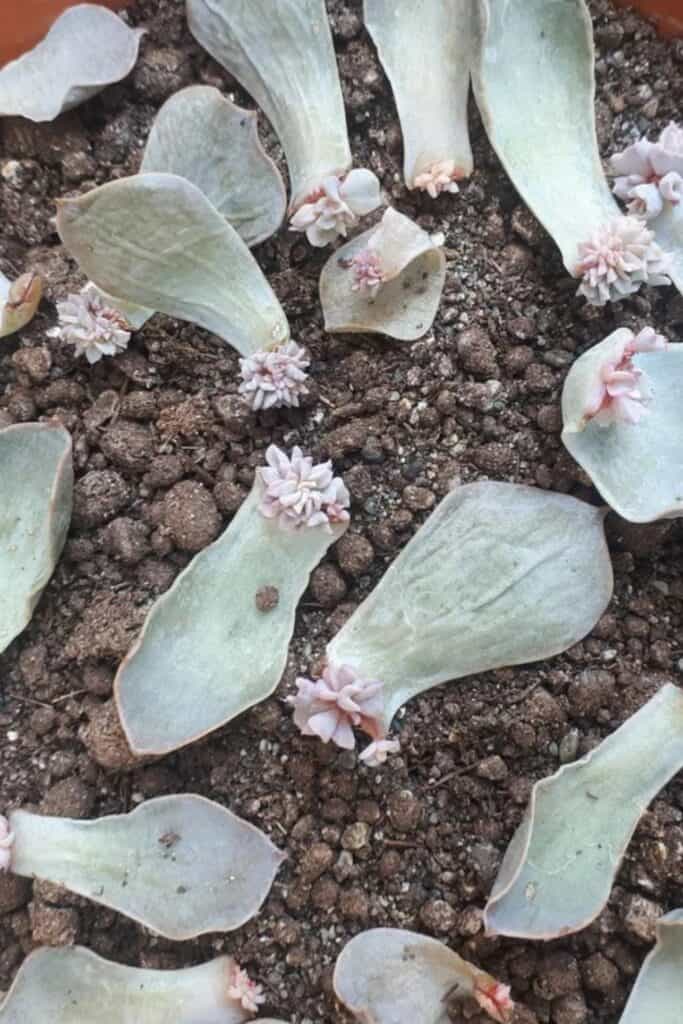
Leaf cuttings involve taking a leaf from a plant and using it to grow a new plant. This method is suitable for plants like succulents, snake plants, African violets, begonias, peperomia, kalanchoe, rex begonia, hoya, echeveria, and pilea. Here’s how to do it:
- Choose Your Plant: Select a healthy plant with firm, mature leaves.
- Make Your Cutting: Using clean scissors or a sharp knife, cut a healthy leaf from the plant.
- Prepare the Leaf: Let the leaf cutting dry and callous over for a day or two to prevent rotting.
- Plant the Leaf: Plant the leaf cutting in moist, well-draining soil. For succulents, you can lay the leaf flat on the soil; for African violets, insert the leaf stem into the soil.
- Provide Care: Place the pot in a spot with bright, indirect light and keep the soil moist. New roots and shoots should start to develop within a few weeks.
Offsets
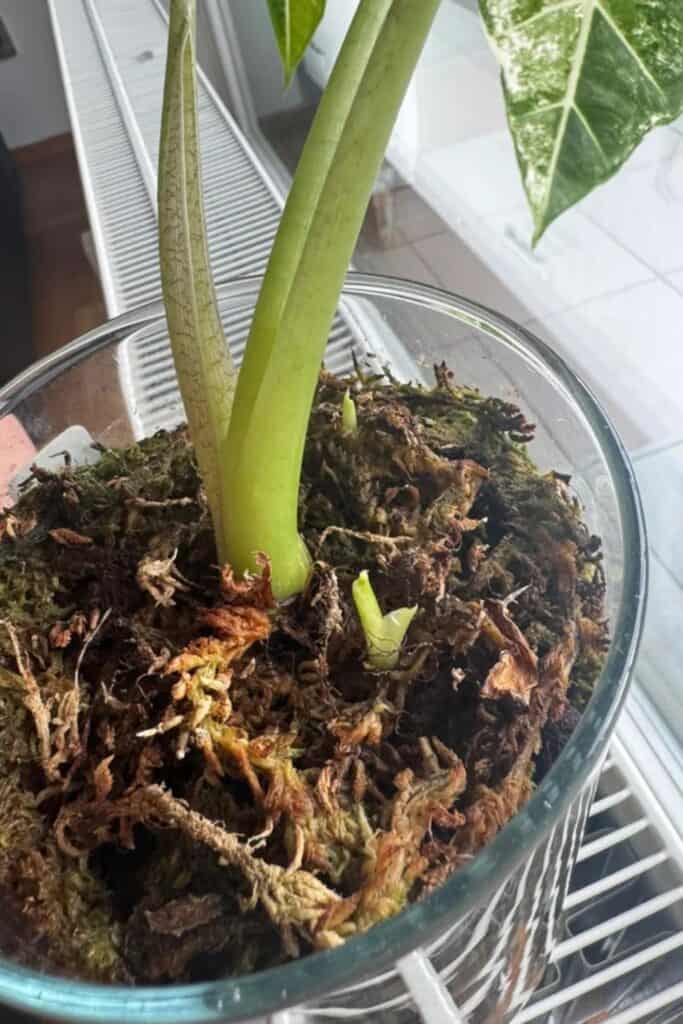
Offsets, also known as “pups,” are small plants that grow from the base of the parent plant. This method is common for plants like spider plants, aloe vera, bromeliads, cacti, agave, sempervivum, banana plants, ponytail palm, yucca, and elephant ears.
- Choose Your Plant: Select a plant that has produced offsets.
- Remove the Offset: Carefully separate the offset from the parent plant, ensuring it has its own roots.
- Plant the Offset: Plant the offset in a small pot with well-draining soil. Water it well and provide proper care.
Seed Propagation
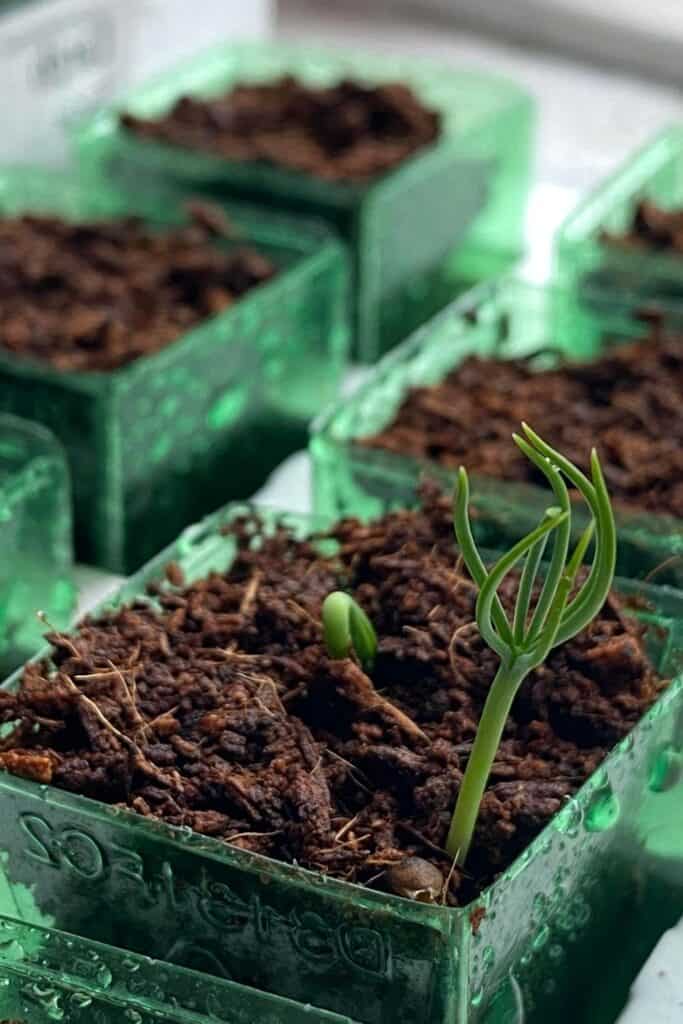
Growing plants from seeds is a rewarding method, especially for annuals, vegetables, and some houseplants like herbs and cacti. Here’s how to do it:
- Choose Your Seeds: Select high-quality seeds from a reputable source.
- Prepare Your Soil: Fill seed trays or pots with seed-starting mix or well-draining soil.
- Sow the Seeds: Plant the seeds according to the packet instructions, usually at a shallow depth.
- Water and Care: Keep the soil moist and provide proper light conditions. Once the seedlings are large enough, transplant them to larger pots or into the garden.
Layering
Layering is another propagation method where a stem is bent down to the ground or another pot and covered with soil to encourage rooting. This method works well for plants like ivy, strawberries, hydrangeas, roses, clematis, wisteria, forsythia, honeysuckle, blackberries, and grapes. Here’s how to do it:
- Choose Your Plant: Select a flexible stem from the parent plant.
- Make a Cut: Make a small cut or wound on the stem where you want it to root.
- Bury the Stem: Bend the stem down to the ground or another pot and bury the wounded section with soil.
- Secure the Stem: Use a stake or rock to keep the stem in place.
- Wait for Roots: Keep the soil moist and wait for roots to develop. Once roots have formed, cut the stem from the parent plant and transplant the new plant.
Tips for Successful Propagation
- Clean Tools: Always use clean, sharp scissors or garden shears to prevent the spread of disease.
- Patience: Propagation takes time, so be patient and don’t rush the process.
- Experiment: Try different propagation methods and plants to see what works best for you.
- Monitor: Keep an eye on your cuttings and new plants to ensure they’re healthy and thriving.
Propagating houseplants is a rewarding and cost-effective way to expand your plant collection. With these techniques and tips, you’ll be well on your way to becoming a propagation pro. Happy gardening!
